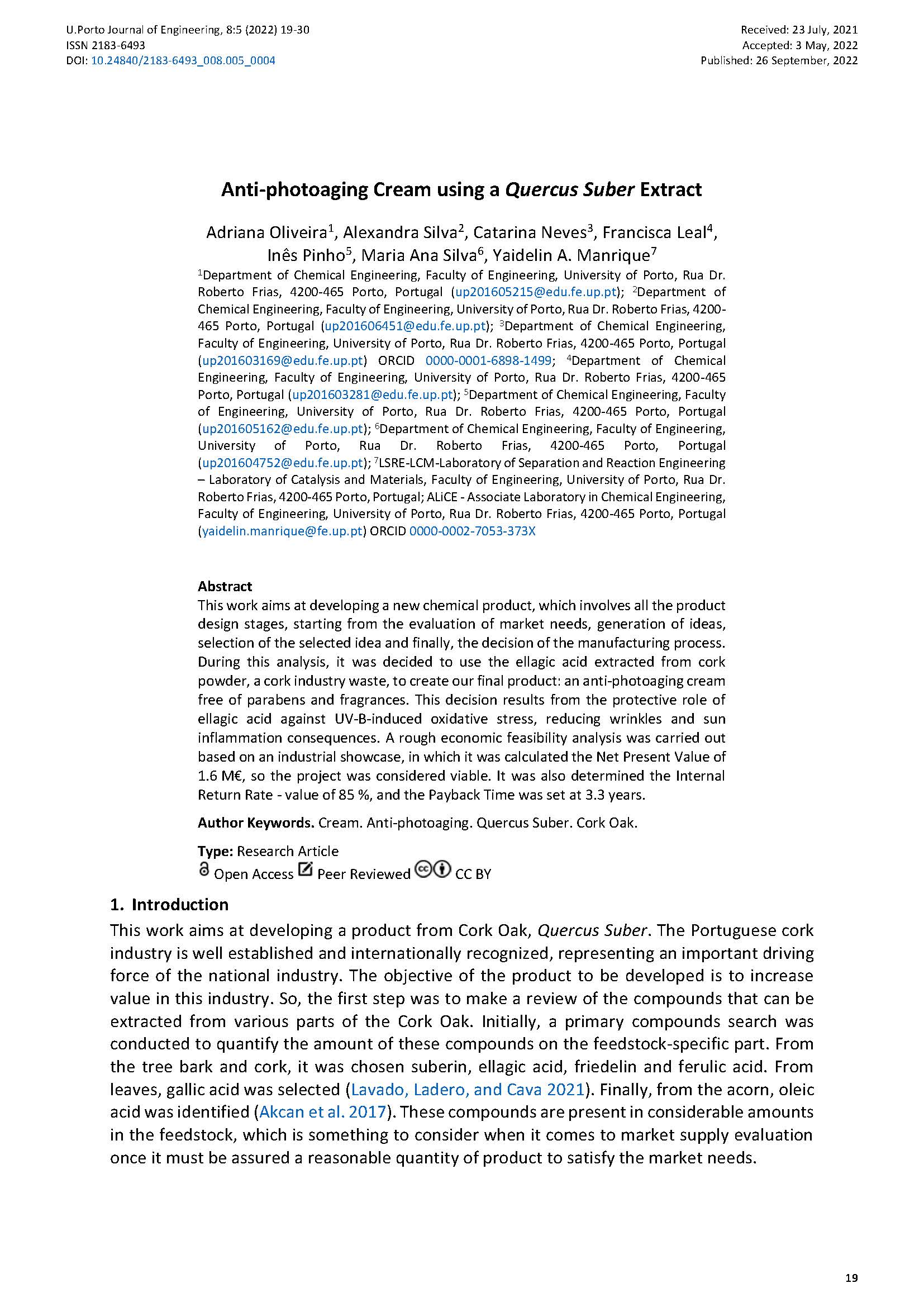Anti-photoaging Cream using a Quercus Suber Extract
Main Article Content
Abstract
This work aims at developing a new chemical product, which involves all the product design stages, starting from the evaluation of market needs, generation of ideas, selection of the selected idea and finally, the decision of the manufacturing process.
During this analysis, it was decided to use the ellagic acid extracted from cork powder, a cork industry waste, to create our final product: an anti-photoaging cream free of parabens and fragrances. This decision results from the protective role of ellagic acid against UV-B-induced oxidative stress, reducing wrinkles and sun inflammation consequences. A rough economic feasibility analysis was carried out based on an industrial showcase, in which it was calculated the Net Present Value of 1.6 M€, so the project was considered viable. It was also determined the Internal Return Rate - value of 85 %, and the Payback Time was set at 3.3 years.
Downloads
Article Details

This work is licensed under a Creative Commons Attribution 4.0 International License.
Authors who publish with this journal agree to the following terms:
- Authors retain copyright and grant the journal right of first publication with the work simultaneously licensed under a Creative Commons Attribution License that allows others to share the work with an acknowledgement of the work's authorship and initial publication in this journal.
- Authors grant the journal the rights to provide the article in all forms and media so the article can be used on the latest technology even after publication and ensure its long-term preservation.
- Authors are able to enter into separate, additional contractual arrangements for the non-exclusive distribution of the journal's published version of the work (e.g., post it to an institutional repository or publish it in a book), with an acknowledgement of its initial publication in this journal.
- Authors are permitted and encouraged to post their work online (e.g., in institutional repositories or on their website) prior to and during the submission process, as it can lead to productive exchanges, as well as earlier and greater citation of published work (See The Effect of Open Access).

